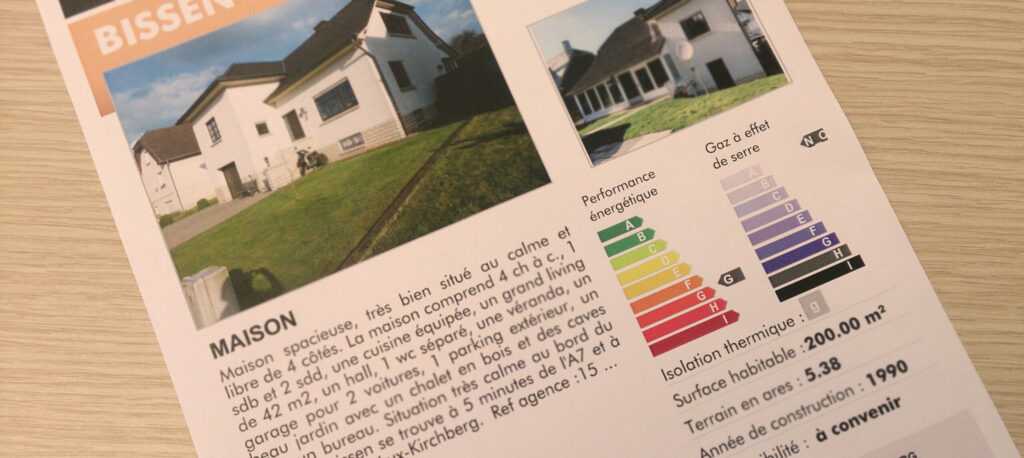Energy class: what impact on prices?

When selling a house, an energy performance certificate must be provided and passed on to the new owner. This document provides information on the energy performance class of the property, which measures the energy requirement of the property in more concrete terms.
Statec conducted a study on the energy class of houses sold and the consequences for prices.
An old energy-intensive housing stock
The first finding of Statec is that the majority of transactions (65%) are still for low energy efficiency houses (classes G, H and I). Only 5% of the houses sold fall into the A, B or C categories.
Note that this analysis only covers existing houses that have changed ownership. Newly built houses obviously have to meet much higher energy performance standards, for example with a requirement for Class A for all building permits introduced from 2015.
Since 2012, it has been compulsory to mention the energy class in property advertisements.
Energy class and property prices
Naturally, the energy class is a factor that influences the selling price. Thus a house that is in the classes A-B-C sell for an average of 9.9% more than a house with a D-E-F class. Compared to a low energy efficiency house (G, H and I), the average transaction price is even 38.3% higher.
At the same time, 57% of purchasers of houses in classes G-H-I at the time of purchase say they want to undertake work on their house. This proportion falls to 16% for buyers of high energy efficiency houses. Therefore, a lower transaction price may be partly compensated by the willingness or need to carry out work.
What are the property prices at the moment?
Written by
atHome
Posted on
11 May 2016
